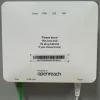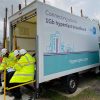Superfast Broadband Still Missing from 11.5% of UK New Build Homes
The latest independent analysis of broadband coverage in the UK has indicated that some 11.5% of new build homes constructed in 2018 (c.124,000 premises) still lack access to superfast internet speeds of 30Mbps+. Similarly only 61.6% of those built were able to access a “full fibre” (FTTH) ISP network.
In fairness the situation, particularly in terms of Fibre-to-the-Home (FTTH) coverage, is improving but there does exist a natural time lag between various policy changes and their implementation. Today most of the major home builders (e.g. Home Builders Federation) have entered into partnerships with network operators (BT and Virgin Media etc.) in order to better facilitate the roll-out of full fibre and slower hybrid fibre (FTTC / HFC DOCSIS) based technologies.
Openreach in particular have recently made it even cheaper to deploy their FTTP network to some of the smallest new build home developments. Previously they only offered a free roll-out to all new developments of 30+ homes, but toward the end of 2018 they also introduced discounts for the smallest builds of between 2 to 29 premises (here).
Advertisement
On top of that a 2016 directive from the EU (details), which was adopted into UK law, is supposed to mean that all newly constructed buildings (i.e. those that gained permission after the 31st December 2016) are “equipped with a high-speed-ready in-building physical infrastructure, up to the network termination points.” But this still leaves it up to the developers and ISPs to decide whether or not to deploy an actual working service.
The UK government has long been advising councils to ensure that they factor all this into local planning approvals, but such things often take time to have an impact. Nevertheless the latest model by Thinkbroadband, which examined new build postcodes, shows that more and more new homes are arriving with superfast and / or “full fibre” availability.
New Build Broadband Cover by Speed and Technology (H2 2018)
| New Premises | % Superfast 30Mbps+ | % Ultrafast 100Mbps+ | % Full Fibre (FTTP) | % Under 10Mbps USO |
| UK 2018 (124,116) | 88.5% | 64.2% | 61.6% | 10.3% |
| UK 2017 (141,535) | 85.7% | 41.7% | 35.94% | 13.2% |
| UK 2016 (168,255) | 87% | 36.1% | 27.64% | 12% |
NOTE 1: The ultrafast figure above predominantly reflects coverage by FTTP/H, HFC DOCSIS (Cable) and possibly some G.fast based networks; mostly delivered via Openreach (BT) and Virgin Media. Meanwhile Hyperoptic, Community Fibre, GTC / OFNL and a few other altnets will also have an impact.
NOTE 2: The focus on postcode level data means that smaller individual developments (e.g. personal single house projects) or property conversions aren’t likely to be factored above, although they don’t tend to attract the same requirements anyway.
NOTE 3: The results for 2018 lack data from December and November 2018, which has yet to be published (i.e. it’s more of a 9 month view).
Overall the results are improving but clearly we’re still a long way from seeing 100% support for “superfast” in new build premises. Meanwhile property developers often say that, despite recent changes, deploying fibre broadband services can in some areas still be prohibitively expensive (this hasn’t stopped many of those companies making huge annual profits).
At this point it’s worth remembering that many larger new build home developments occurring today actually went through planning approval several years ago and will then take years to complete. Due to this a lot of the related broadband changes in the industry and policy have yet to affect them. In time this problem should resolve itself but for now a gap will continue to exist and that may be more noticeable in remote areas.
Advertisement
Similarly some of the measures that were proposed as part of last year’s Future Telecoms Infrastructure Review (FTIR) are still being consulted upon. This includes changes to mandate Gigabit capable broadband connections for new build homes and making it easier for network operators to access buildings where landlords fail to respond (details in our Budget 2018 news).
In fairness some of the above changes also have to be balanced against the current problem with rental charges, which has previously resulted in some operators forcing “derisory payments” on land/building owners when installing their kit (here). But at present this seems to be more of an issue with certain mobile operators than broadband providers.
Mark is a professional technology writer, IT consultant and computer engineer from Dorset (England), he also founded ISPreview in 1999 and enjoys analysing the latest telecoms and broadband developments. Find me on X (Twitter), Mastodon, Facebook, BlueSky, Threads.net and Linkedin.
« NIC Open Future of Regulation Study into UK Telecoms and Utilities


















































Comments are closed